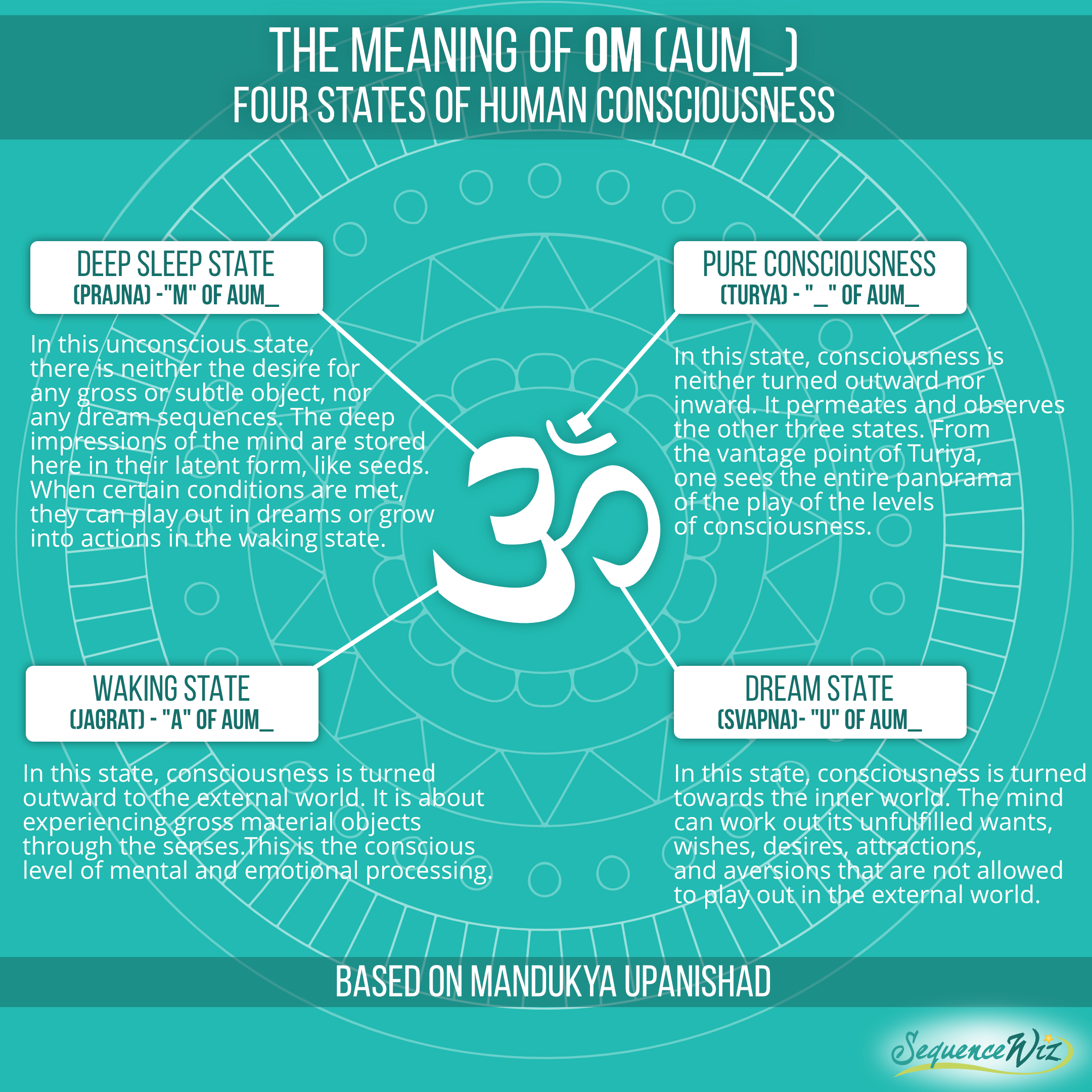The Four States (avasthās) of Consciousness
Introduction
Here we explore the four states of consciousness as described in Indian psychology.
Three States of Experience
All human experiences can be categorized into three states:
- Waking State (Jagrat): The state of being awake and aware of the external world through the senses.
- Dream State (Swapna): The state of dreaming, where the mind is active but disconnected from the external world.
- Deep Sleep State (Sushupti): The state of deep sleep where there is no awareness of the external world or dreams.
The Fourth State: Turiya
Beyond these three states, there is a fourth state called Turiya, which is not a state of experience but the underlying consciousness that is present in all three states. It is the state of pure awareness, beyond the limitations of the mind and body.
Characteristics of the States
- Waking State: Characterized by sensory experiences and interactions with the external world.
- Dream State: Characterized by mental activity and the creation of images and experiences.
- Deep Sleep State: Characterized by a lack of awareness and a sense of deep rest.
- Turiya: Characterized by pure awareness, transcending the limitations of the three states.
Understanding Consciousness
By understanding the three states of experience and the fourth state of Turiya, we can gain a deeper understanding of the nature of consciousness.


